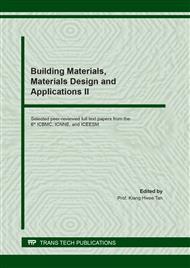p.3
p.13
p.21
p.29
p.39
p.45
p.53
p.61
Experimental Investigation of Transfer of PTFE on Bearing Steel
Abstract:
Polytetrafluoroethylene (PTFE) lubricant is commonly applied for dry contact due to its low friction properties. However, low strength properties can lead to short service-life due to high wear rate, especially under high contact load. The method to add PTFE into a solid contact during operation as a transfer layer has been one of the major attempts in this field. This study aims to investigate the influence of operating parameters, i.e., revolution cycle, sliding speed and applied load, on coverage area of transfer PTFE on the bearing steel (AISI 52100) disc. The experiments were performed on the modified pin-on-disc apparatus using a unidirectional ground disc. The areas with disc grinding direction parallel (parallel morphology) and perpendicular (perpendicular morphology) to the pin sliding direction were both examined. The ascending of transfer coverage area with an increasing revolution cycle within the first 1000 cycle was observed on the area with a sliding direction perpendicular to the disc grinding direction while the descending of transfer coverage area was found on the parallel case. The further increase in the revolution cycle led to only a small change in the transfer coverage area. With more revolution cycles, the pin wear rate increased as a decrease in transfer coverage area formed on the counter-face. Research suggested that the amount of transfer coverage area decreased with increasing sliding speed. However, it could be increased by increasing the applied load.
Info:
Periodical:
Pages:
3-11
Citation:
Online since:
August 2021
Authors:
Keywords:
Price:
Сopyright:
© 2021 Trans Tech Publications Ltd. All Rights Reserved
Share:
Citation:


